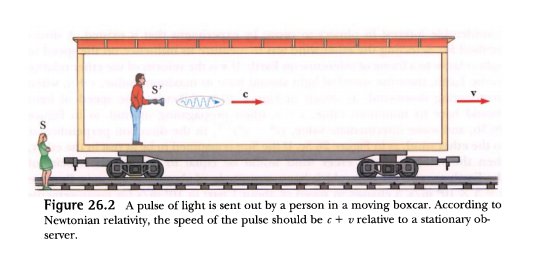There is absolute truth in science. Of the following two statements one is absolutely true, the other is false:
(A) The speed of light, as measured by the observer (receiver), varies with the speed of the emitter.
(B) The speed of light, as measured by the observer (receiver), does not vary with the speed of the emitter.
Einstein hesitated between (A), a tenet of Newton's theory, and (B), a tenet of the ether theory, and finally chose (B) as his 1905 second postulate:
Einstein: "I introduced the principle of the constancy of the velocity of light, which I borrowed from H. A. Lorentz's theory of the stationary luminiferous ether." https://en.wikipedia.org/wiki/Lorentz_ether_theory
The true statement is (A):

The statement (B) proved extremely malignant. Its metastases killed the whole branch of science called "physics", as the following texts imply:
Bryan Wallace: "Einstein's special relativity theory with his second postulate that the speed of light in space is constant is the linchpin that holds the whole range of modern physics theories together. Shatter this postulate, and modern physics becomes an elaborate farce!...The speed of light is c+v." http://www.kritik-relativitaetstheorie.de/2013/02/the-farce-of-physics-2/ Note: Bryan Wallace wrote "The Farce of Physics" on his deathbed so one should not judge him too severely for (numerous) imperfections.
Joao Magueijo, Niayesh Afshordi: "The whole of physics is predicated on the constancy of the speed of light...So we had to find ways to change the speed of light without wrecking the whole thing too much." https://motherboard.vice.com/en_us/article/8q87gk/light-speed-slowed
"He opened by explaining how Einstein's theory of relativity is the foundation of every other theory in modern physics and that the assumption that the speed of light is constant is the foundation of that theory. Thus a constant speed of light is embedded in all of modern physics and to propose a varying speed of light (VSL) is worse than swearing! It is like proposing a language without vowels." http://www.thegreatdebate.org.uk/VSLRevPrnt.html
"If there's one thing every schoolboy knows about Einstein and his theory of relativity, it is that the speed of light in vacuum is constant. No matter what the circumstances, light in vacuum travels at the same speed...The speed of light is the very keystone of physics, the seemingly sure foundation upon which every modern cosmological theory is built, the yardstick by which everything in the universe is measured...The constancy of the speed of light has been woven into the very fabric of physics, into the way physics equations are written, even into the notation used. Nowadays, to "vary" the speed of light is not even a swear word: It is simply not present in the vocabulary of physics." https://www.amazon.com/Faster-Than-Speed-Light-Speculation/dp/0738205257
(A) The speed of light, as measured by the observer (receiver), varies with the speed of the emitter.
(B) The speed of light, as measured by the observer (receiver), does not vary with the speed of the emitter.
Einstein hesitated between (A), a tenet of Newton's theory, and (B), a tenet of the ether theory, and finally chose (B) as his 1905 second postulate:
Einstein: "I introduced the principle of the constancy of the velocity of light, which I borrowed from H. A. Lorentz's theory of the stationary luminiferous ether." https://en.wikipedia.org/wiki/Lorentz_ether_theory
The true statement is (A):
The statement (B) proved extremely malignant. Its metastases killed the whole branch of science called "physics", as the following texts imply:
Bryan Wallace: "Einstein's special relativity theory with his second postulate that the speed of light in space is constant is the linchpin that holds the whole range of modern physics theories together. Shatter this postulate, and modern physics becomes an elaborate farce!...The speed of light is c+v." http://www.kritik-relativitaetstheorie.de/2013/02/the-farce-of-physics-2/ Note: Bryan Wallace wrote "The Farce of Physics" on his deathbed so one should not judge him too severely for (numerous) imperfections.
Joao Magueijo, Niayesh Afshordi: "The whole of physics is predicated on the constancy of the speed of light...So we had to find ways to change the speed of light without wrecking the whole thing too much." https://motherboard.vice.com/en_us/article/8q87gk/light-speed-slowed
"He opened by explaining how Einstein's theory of relativity is the foundation of every other theory in modern physics and that the assumption that the speed of light is constant is the foundation of that theory. Thus a constant speed of light is embedded in all of modern physics and to propose a varying speed of light (VSL) is worse than swearing! It is like proposing a language without vowels." http://www.thegreatdebate.org.uk/VSLRevPrnt.html
"If there's one thing every schoolboy knows about Einstein and his theory of relativity, it is that the speed of light in vacuum is constant. No matter what the circumstances, light in vacuum travels at the same speed...The speed of light is the very keystone of physics, the seemingly sure foundation upon which every modern cosmological theory is built, the yardstick by which everything in the universe is measured...The constancy of the speed of light has been woven into the very fabric of physics, into the way physics equations are written, even into the notation used. Nowadays, to "vary" the speed of light is not even a swear word: It is simply not present in the vocabulary of physics." https://www.amazon.com/Faster-Than-Speed-Light-Speculation/dp/0738205257


